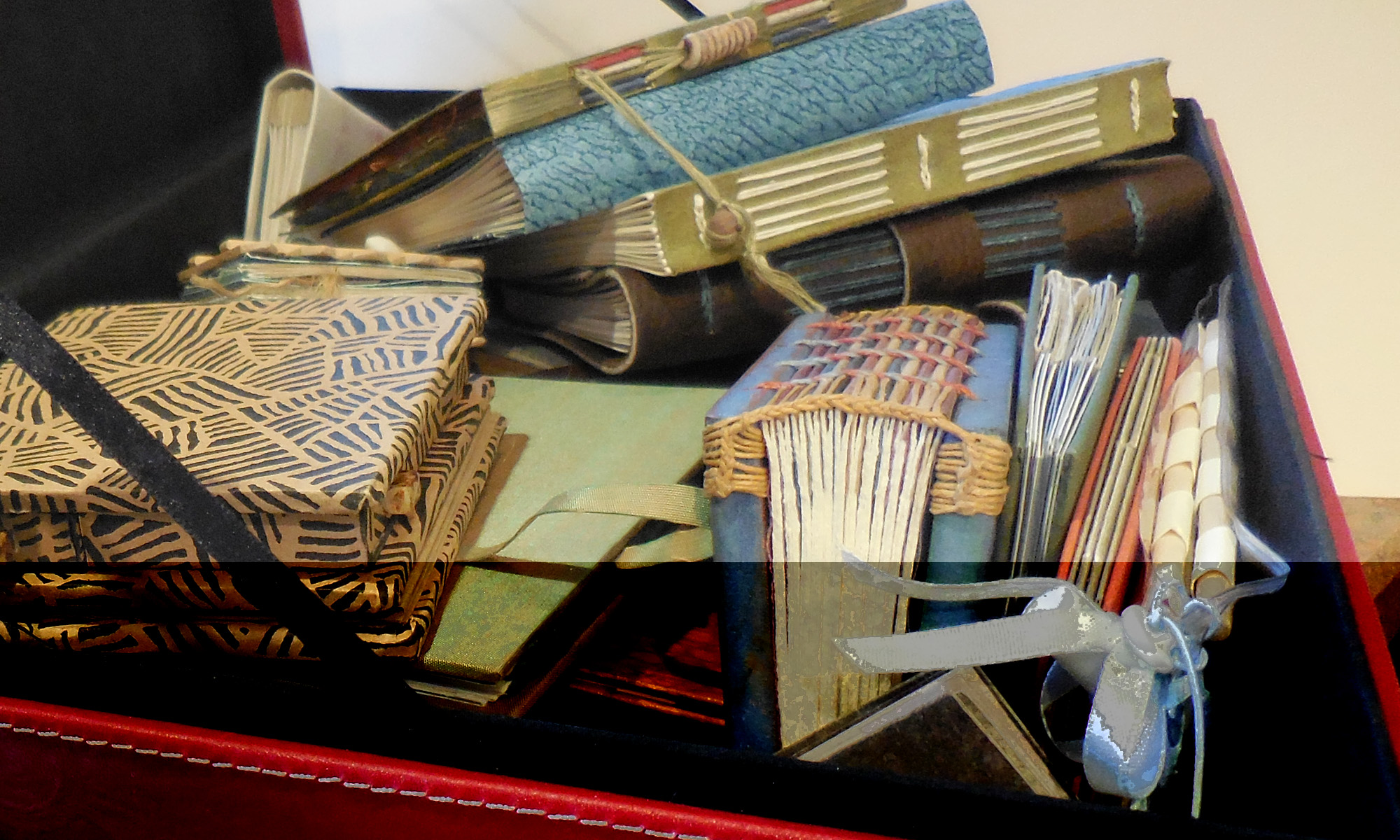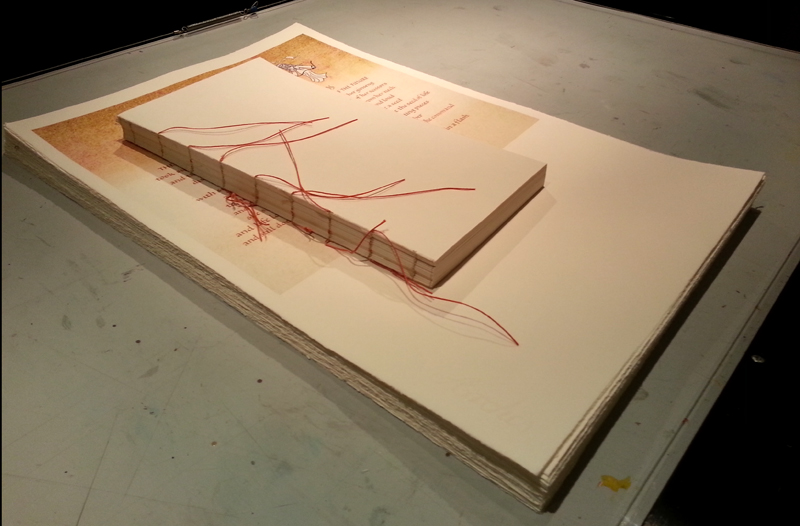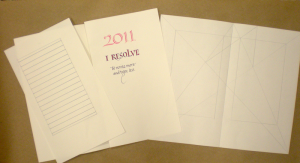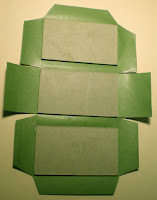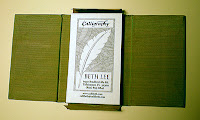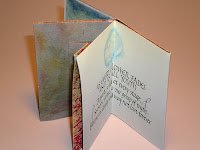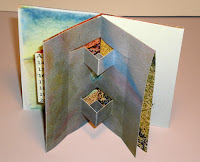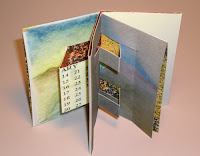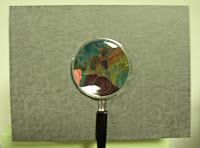 Here’s a the front cover of the tunnel book I did in my 3D Design class this semester. (Odd that I would have a tunnel book assignment in 2D Design last semester, and another one in 3D Design this semester.) I’ll post the first tunnel book when I get it back. Julia DeHoff and I are exhibiting some of our artist books at the public library during the month of October, and that first tunnel book is on display there.
Here’s a the front cover of the tunnel book I did in my 3D Design class this semester. (Odd that I would have a tunnel book assignment in 2D Design last semester, and another one in 3D Design this semester.) I’ll post the first tunnel book when I get it back. Julia DeHoff and I are exhibiting some of our artist books at the public library during the month of October, and that first tunnel book is on display there.
The idea for the book came from an essay on butterfly collecting by Ann Fadiman in her book At Large and At Small: Familiar Essays. She describes her childhood obsession with butterfly collecting, recounting in gruesome detail the catching and killing and mounting and collecting of the butterflies. This quote stayed with me: “When did we realize that this was horrible? My brother, Kim, and I had started collecting butterflies when he was eight and I was six. Shame set in about two years later. I remember a period of painful overlap, when the light of decency was dawning but the lure of sin was still irresistible.” This seems to me an excellent description of our current relationship with our planet.
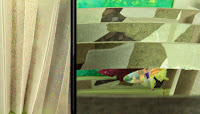 The left side of this image shows quotes from the essay written on the side accordion folds of the tunnel book. (You probably can’t even see it unless you click on the image to get the full-size image.) The right side of the image is a view of the tunnel book from above. Since the view window of the tunnel is a magnifying glass, it was even more difficult than usual to photograph the view inside. The butterflies, cut from my stash of pasted-painted and decorative paper scraps, hang from the tunnel frames by strips of transparency film.
The left side of this image shows quotes from the essay written on the side accordion folds of the tunnel book. (You probably can’t even see it unless you click on the image to get the full-size image.) The right side of the image is a view of the tunnel book from above. Since the view window of the tunnel is a magnifying glass, it was even more difficult than usual to photograph the view inside. The butterflies, cut from my stash of pasted-painted and decorative paper scraps, hang from the tunnel frames by strips of transparency film.
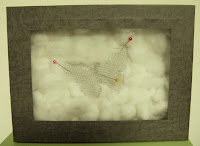 The back of the tunnel book was made to look like a Riker mounted dead butterfly, or perhaps ghost of a butterfly. I made a covered box and a lid which glass from a battered 5″x7″ frame. I thought I’d have to secure it closed with some pins, but the fit was quite snug enough to stay closed on its own. If I’d had more time, I would have found some jeweler’s cotton; as it was, the morning the tunnel book was due I was feverishly pulling apart cotton balls and trying to approximate that layer of cotton.
The back of the tunnel book was made to look like a Riker mounted dead butterfly, or perhaps ghost of a butterfly. I made a covered box and a lid which glass from a battered 5″x7″ frame. I thought I’d have to secure it closed with some pins, but the fit was quite snug enough to stay closed on its own. If I’d had more time, I would have found some jeweler’s cotton; as it was, the morning the tunnel book was due I was feverishly pulling apart cotton balls and trying to approximate that layer of cotton.
Such is often the nature of class projects. I have to keep remembering that they’re not actually going in a juried show, for instance.
Like this:
Like Loading...
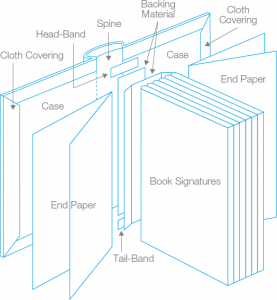 The post on the anatomy of a book, for example, pulls together an illustration, a glossary and a video explaining the parts of the book.
The post on the anatomy of a book, for example, pulls together an illustration, a glossary and a video explaining the parts of the book.